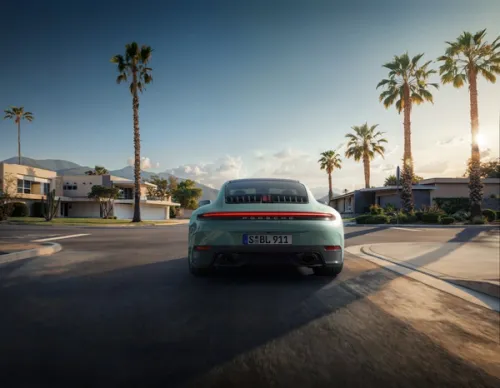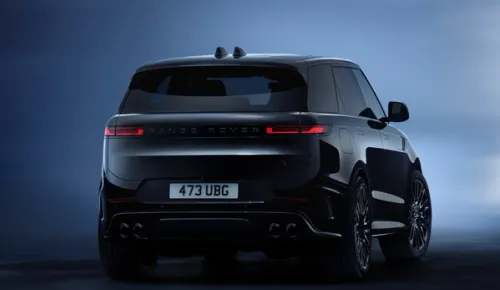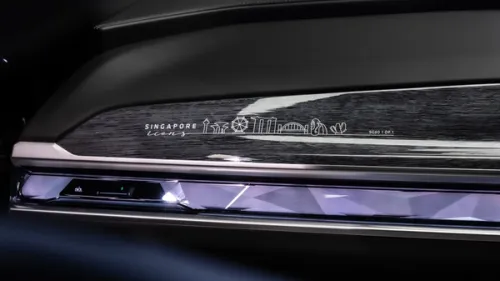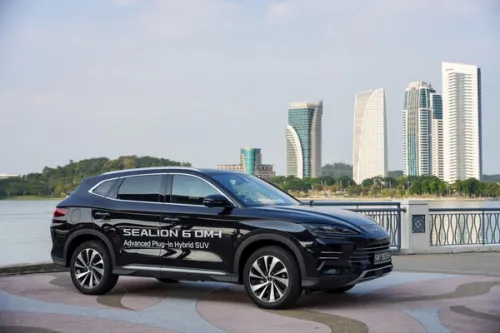US: Hyundai Nuvis concept
The Nuvis is the eleventh signature concept car to be designed at the company's California Design Center in Irvine, Calif.


In addition to showcasing the brand's cutting-edge capabilities, Nuvis also hints at a possible design direction for a future-generation crossover, blending attributes of a tall urban car and a premium utility vehicle.
Consistent with Hyundai's pledge to lead all brands in U.S. fuel economy by 2015, Nuvis is powered by Hyundai's Hybrid Blue Drive architecture, which uses breakthrough lithium polymer battery technology.
[B]EVOLUTION OF THE DESIGN[/B]
In developing the initial sketches, Hyundai designers considered the interplay of natural, fluid elements with more rigid surfaces and structures to create the illusion of constant motion. Specifically, designers studied the way water splits across and flows around the hull and sides of a boat, creating a wake, or the way wind shapes a snowdrift or flurries through trees. The living power of these elements is reflected in the Nuvis' design.
"Our goal was to create a living machine, constantly moving, that the driver and passengers could be part of," said John Krsteski, Hyundai Design manager. "There are no lines on or in this car that are standing still."
[B]EXTERIOR DESIGN[/B]
The Nuvis has an assertive face demonstrated by the strong, hour-glass shape that frames the blue acrylic shield grille and aggressive headlamps, whose two glowing white rings are offset by a pair of red rings on the tail lights.
Perched on top of 22-inch wheels, Nuvis' proportions are tall, strong and protective. The two body-side lines set up a flowing water effect, giving the appearance of motion.
An additional design element featured on the Nuvis is a brushed aluminum accent that spans the entire length of the vehicle. Normally, this type of trim is only found around the windows. On the Nuvis, this trim extends out from the headlamps, juts up along the hood and through the beltline, across the top and into the rear spoiler.
[B]INTERIOR DESIGN[/B]
In keeping with the exterior design scheme, the Nuvis' spacious and luxurious interior is dominated by a cool, blue acrylic center stack that ebbs and surges in the manner of a river. The cascading floor, with its blue ambient lighting, further enhances an environment in which seamless technology flows, enveloping both the driver and passengers.
A current of information coming from the instrument panel streams throughout the cockpit, as passengers are able to access each other via Methode Electronics TouchSense® technology that links all four business-class seats. The car's infotainment system is fed by channels from the outside - the occupants, for instance, can learn of a restaurant's specials that evening as they drive past it.
[B]HYUNDAI'S HYBRID BLUE DRIVE ARCHITECTURE[/B]
Hyundai's all-new, homegrown Hybrid Blue Drive architecture helps define the Nuvis concept. Hyundai's proprietary parallel hybrid drive system mates the already-fuel efficient 2.4-liter Theta II engine to a 6-speed automatic transmission and a 40 HP electric motor for maximum fuel economy.
Hybrid Blue Drive has an all-electric mode and a parallel drive mode, meaning that the wheels are turned by power coming directly from the gasoline engine, or the electric motor, or both together, as conditions demand. This parallel hybrid drive architecture will serve as the foundation for future Hyundai hybrid drive vehicles, starting with the next-generation Sonata in the United States.
To maximize fuel economy, all of the Theta II's major driveline and cooling system components have been optimized to reduce friction, while the crankcase has been filled with low friction oil.
Engine management software automatically shuts off the engine when the vehicle comes to a halt, cutting emissions to zero. The engine automatically restarts when pressure is reapplied to the accelerator pedal due to the Integrated Starter Generator (ISG).
To further reduce fuel consumption, the Theta II's engine management software, which governs injection pressure, engine cycle timing and exhaust retreatment rates, has been revised. This control strategy assures that maximum efficiency is achieved during gentle acceleration, while greater power is immediately available during full acceleration. During deceleration, regenerative braking also comes into play to help conserve energy.
[B]LITHIUM POLYMER BATTERY TECHNOLOGY[/B]
Hyundai's hybrid system stores its electrical charge in a 270V lithium polymer rechargeable battery (5.3Ah/270V) that surpasses both existing nickel-metal hydride and pending lithium-ion applications. Lithium polymer batteries are more durable and space-efficient than other, bulkier hybrid batteries.
[IMG]http://www.oneshift.com/showroom/uploadimages/resized-20090415221728630.jpg[/IMG]
[IMG]http://www.oneshift.com/showroom/uploadimages/resized-20090415221657713.jpg[/IMG]
[IMG]http://www.oneshift.com/showroom/uploadimages/resized-20090415221632271.jpg[/IMG]
[IMG]http://www.oneshift.com/showroom/uploadimages/resized-20090415221611091.jpg[/IMG]
[IMG]http://www.oneshift.com/showroom/uploadimages/resized-20090415221551020.jpg[/IMG]
Credits: JRC


Get the Best Price for your used car
from 500+ dealers in 24 hours

- Convenient and Hassle-Free
- Consumer Protection
Transparent Process
With No Obligation








